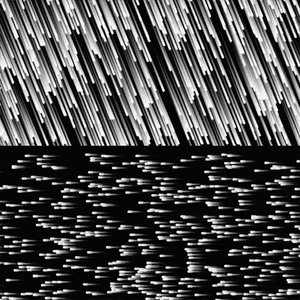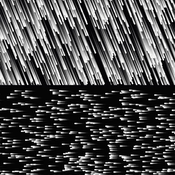Information
- Publication Type: Journal Paper with Conference Talk
- Workgroup(s)/Project(s):
- Date: November 2014
- Journal: IEEE Transactions on Visualization and Computer Graphics
- Volume: 20
- Number: 11
- Location: IEEE VIS 2014
- Lecturer: Åsmund Birkeland
- ISSN: 1077-2626
- Event: IEEE VIS 2014
- Conference date: 9. November 2014 – 14. November 2014
- Pages: 1542 – 1554
- Keywords: motion visualization, motion perception, animation, evauation, perceptual model
Abstract
Flow data is often visualized by animated particles inserted into a ?ow ?eld. The velocity of a particle on the screen is typically linearly scaled by the velocities in the data. However, the perception of velocity magnitude in animated particles is not necessarily linear. We present a study on how different parameters affect relative motion perception. We have investigated the impact of four parameters. The parameters consist of speed multiplier, direction, contrast type and the global velocity scale. In addition, we investigated if multiple motion cues, and point distribution, affect the speed estimation. Several studies were executed to investigate the impact of each parameter. In the initial results, we noticed trends in scale and multiplier. Using the trends for the signi?cant parameters, we designed a compensation model, which adjusts the particle speed to compensate for the effect of the parameters. We then performed a second study to investigate the performance of the compensation model. From the second study we detected a constant estimation error, which we adjusted for in the last study. In addition, we connect our work to established theories in psychophysics by comparing our model to a model based on Stevens’ Power Law.Additional Files and Images
Weblinks
BibTeX
@article{birkeland_aasmund_2014_pums,
title = "Perceptually Uniform Motion Space",
author = "{\AA}smund Birkeland and Cagatay Turkay and Ivan Viola",
year = "2014",
abstract = "Flow data is often visualized by animated particles inserted
into a ?ow ?eld. The velocity of a particle on the screen is
typically linearly scaled by the velocities in the data.
However, the perception of velocity magnitude in animated
particles is not necessarily linear. We present a study on
how different parameters affect relative motion perception.
We have investigated the impact of four parameters. The
parameters consist of speed multiplier, direction, contrast
type and the global velocity scale. In addition, we
investigated if multiple motion cues, and point
distribution, affect the speed estimation. Several studies
were executed to investigate the impact of each parameter.
In the initial results, we noticed trends in scale and
multiplier. Using the trends for the signi?cant parameters,
we designed a compensation model, which adjusts the particle
speed to compensate for the effect of the parameters. We
then performed a second study to investigate the performance
of the compensation model. From the second study we detected
a constant estimation error, which we adjusted for in the
last study. In addition, we connect our work to established
theories in psychophysics by comparing our model to a model
based on Stevens’ Power Law.",
month = nov,
journal = "IEEE Transactions on Visualization and Computer Graphics",
volume = "20",
number = "11",
issn = "1077-2626",
pages = "1542--1554",
keywords = "motion visualization, motion perception, animation,
evauation, perceptual model",
URL = "https://www.cg.tuwien.ac.at/research/publications/2014/birkeland_aasmund_2014_pums/",
}



